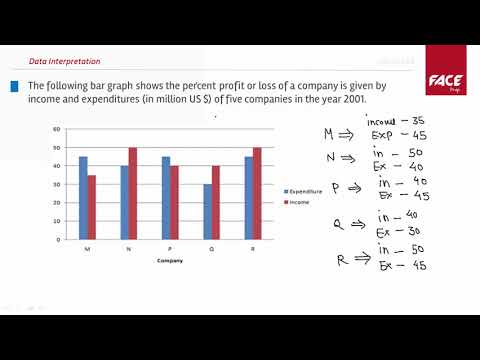Data interpretation is the process of reviewing data through some predefined processes which will help assign some meaning to the data and arrive at a relevant conclusion. It involves taking the result of data analysis, making inferences on the relations studied, and using them to conclude.
Data analysis has multiple facets and approaches, encompassing diverse techniques under a variety of names, and is used in different business, science, and social science domains. In today’s business world, data analysis plays a role in making decisions more scientific and helping businesses operate more effectively.
Data interpretation is a particular data analysis technique that focuses on statistical modelling and knowledge discovery for predictive rather than purely descriptive purposes, while business intelligence covers data analysis that relies heavily on aggregation, focusing mainly on business information. In statistical applications, data analysis can be divided into descriptive statistics, exploratory data analysis (EDA), and confirmatory data analysis (CDA).
EDA focuses on discovering new features in the data while CDA focuses on confirming or falsifying existing hypotheses. Predictive analytics focuses on the application of statistical models for predictive forecasting or classification, while text analytics applies statistical, linguistic, and structural techniques to extract and classify information from textual sources, a species of unstructured data. All of the above are varieties of data analysis.
What are the steps in interpreting data?
There are four steps to data interpretation: 1) assemble the information you’ll need, 2) develop findings, 3) develop conclusions, and 4) develop recommendations. The following sections describe each step. The sections on findings, conclusions, and recommendations suggest questions you should answer at each step.
How do you analyze and interpret data?
- Collect your data and make it as clean as possible.
- Choose the type of analysis to perform: qualitative or quantitative, and apply the methods respectively to each.
- Qualitative analysis: observe, document and interview notice, collect and think about things.
What are the techniques of interpretation?
- 6 Major Types of Interpreting. Homepage.
- Simultaneous Interpreting.
- Consecutive Interpreting.
- Escort/Travel Interpreting.
- Whisper Interpreting.
- Scheduled Telephone Interpreting (OPI or Over-the-Phone Interpretation)
- On-Demand Phone Interpreting.
How do you collect and interpret data?
- Set Clear Measurement Priorities.
- Collect Data.
- Analyze Data.
- Interpret Results.
How do you interpret qualitative data?
- Prepare and organize your data. Print out your transcripts, gather your notes, documents, or other materials.
- Review and explore the data.
- Create initial codes.
- Review those codes and revise or combine into themes.
- Present themes in a cohesive manner.
How do you present data in a report?
- 1) Make sure your data can be seen.
- 2) Focus most on the points your data illustrates.
- 3) Share one — and only one — major point from each chart.
- 4) Label chart components clearly.
- 5) Visually highlight “Aha!” zones.
- 6) Write a slide title that reinforces the data’s point.
- 7) Present to your audience, not to your data.
How can I improve my interpretation skills?
- Note Taking.
- Form Own Notation System.
- Trust Your Memory Skills.
- Build Up Your Vocabulary.
- Keep Cultural Differences In Mind.
- Watch Videos.
- Use Or Develop Symbols & Abbreviations.
How do you analyze?
- Choose a Topic. Begin by choosing the elements or areas of your topic that you will analyze.
- Take Notes. Make some notes for each element you are examining by asking some WHY and HOW questions, and do some outside research that may help you to answer these questions.
- Draw Conclusions.
How do you analyze data from observations?
In analyzing descriptive data, the researcher reviews what was witnessed and recorded, and synthesizes it with the observations and words of the participants themselves. The observer begins with reading a situation as a text, applying as many critical techniques as possible without violating the sanctity of the text.





